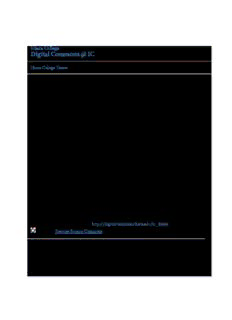
The Abdominal Musculature and Cycling Performance PDF
Preview The Abdominal Musculature and Cycling Performance
Ithaca College Digital Commons @ IC Ithaca College Theses 2016 The Abdominal Musculature and Cycling Performance Tamara Meuwissen Ithaca College, [email protected] Follow this and additional works at:http://digitalcommons.ithaca.edu/ic_theses Part of theExercise Science Commons Recommended Citation Meuwissen, Tamara, "The Abdominal Musculature and Cycling Performance" (2016).Ithaca College Theses.Paper 317. This Thesis is brought to you for free and open access by Digital Commons @ IC. It has been accepted for inclusion in Ithaca College Theses by an authorized administrator of Digital Commons @ IC. THE ABDOMINAL MUSCULATURE AND CYCLING PERFORMANCE A Master’s Thesis presented to the Faculty of the Graduate Program in Exercise and Sport Sciences Ithaca College ______________________________ In partial fulfillment of the requirements for the degree Master of Science ______________________________ by Tamara Meuwissen August 2016 Ithaca College School of Health Science and Human Performance Ithaca, NY CERTIFICATE OF APPROVAL ______________________________ MASTER OF SCIENCE THESIS ______________________________ This is to certify that the Thesis of Tamara Meuwissen Submitted in partial fulfillment of the requirements for the degree of Master of Science in The School of Health Sciences and Human Performance at Ithaca College has been approved. Thesis Advisor: Committee Member: Candidate: Chair, Graduate Program in Exercise & Sport Sciences: Dean of Health Sciences And Human Performance: Date: ABSTRACT Purpose: The purpose was to determine if abdominal power and endurance were related to anaerobic and aerobic cycling performance and if abdominal fatigue influences cycling parameters. Methods: Twenty-three college aged subjects, whose X̅ ± SD for age, height, and weight, were 19.17 ± 1.0 years, 170.4 ± 7.5 cm, and 74.5 ± 14.1 kg, completed the front abdominal power throw and ACSM Crunch test so we could evaluate their abdominal power and endurance, respectively. The tests were completed twice across 48 hours to attenuate any learning effects. Twelve of the subjects completed the Wingate anaerobic power test on a Monark 834 E ergometer set at 7.5% of body mass. The remaining 11 subjects completed a 3.2 km cycling time trial (TT) on an Expresso S3U virtual reality bike; mean TT power and time were recorded as indicators of aerobic cycling performance. Subjects completed familiarization, baseline, and performance trials for the cycling measures; immediately before the performance trials, subjects completed abdominal crunches to fatigue. All tests were preceded and followed by a warm-up and cool-down. Dependent t-tests were used to assess differences between baseline and performance cycling trials, while correlational analyses were used to evaluate the relationships between abdominal and cycling measures; p was set at 0.05. Results: Abdominal muscle fatigue significantly decreased mean anaerobic power by 16% (p = 0.000) and increased the rate of fatigue by 19.8% (p = 0.004). Peak power decreased by 5.6%; the change approached significance (p = 0.088). Abdominal muscle fatigue didn’t affect TT performance; however, after fatigue, abdominal power was significantly correlated with TT mean power and time (r = -0.708 and 0.704, respectively). No other significant correlations were found between abdominal and cycling measures before or iii after fatigue. Conclusion: The data showed that abdominal fatigue negatively affects anaerobic cycling performance in non-cyclist trained subjects. Consequently, individuals may wish to avoid fatiguing abdominal exercise prior to anaerobic power tests or competitions that include anaerobic power elements. iv DEDICATION This thesis is dedicated to all of the people who provided me endless support throughout this project, as well as during my entire educational career. v ACKNOWLEDGMENTS I would like to thank Dr. Thomas Swensen for his encouragement, guidance, and extreme patience with me throughout this project. I would like to thank Dr. Jeffrey Ives for his insight to the matter and providing me with materials to become more deeply involved in this project. I would like to thank Alexa Chandler for assisting me with data collection. I would like to thank Anthony Spinelli for taking the time and energy to discuss new ideas, provide research materials, and go above and beyond to help a friend. I would like to thank my subjects for their efforts and participation in this project. I would like to give the biggest thanks to Scott Tuohy, whose constant support, advice, and encouragement helped me finish this project. vi TABLE OF CONTENTS ABSTRACT ....................................................................................................................... iii DEDICATION .................................................................................................................... v ACKNOWLEDGEMENTS ............................................................................................... vi LIST OF TABLES .............................................................................................................. x CHAPTER 1. INTRODUCTION ......................................................................................................... 1 Purposes ................................................................................................................... 2 Hypotheses .............................................................................................................. 2 Definition of Terms ................................................................................................. 2 Delimitations ........................................................................................................... 2 Limitations ............................................................................................................... 3 2. REVIEW OF LITERATURE ........................................................................................ 4 Introduction ............................................................................................................. 4 Cycling Performance ............................................................................................... 5 Anaerobic Cycling Power and Performance ..................................................... 6 Aerobic Cycling Endurance and Performance ................................................ 11 Abdominal Musculature ........................................................................................ 12 Abdominal Power and Performance ................................................................ 14 Measures of Abdominal Power ....................................................................... 16 Abdominal Endurance and Performance ......................................................... 18 Measures of Abdominal Endurance ................................................................ 20 Summary ................................................................................................................ 22 vi i 3. METHODS .................................................................................................................. 24 Subjects .................................................................................................................. 24 Procedures ............................................................................................................. 25 Measurements and Instrumentation ....................................................................... 28 Front Abdominal Power Throw ....................................................................... 28 ACSM Abdominal Curl-Up (Crunch) ............................................................. 29 Wingate (Group A) .......................................................................................... 30 3.2 km Time Trial (Group B) .......................................................................... 31 Abdominal Fatiguing Exercise ........................................................................ 32 Criterion Measures ................................................................................................ 32 Data Analysis ......................................................................................................... 33 4. RESULTS .................................................................................................................... 34 Correlational Analyses .......................................................................................... 35 T-Test Analyses ..................................................................................................... 36 Summary ................................................................................................................ 37 5. DISCUSSION .............................................................................................................. 38 Summary ................................................................................................................ 41 6. SUMMARY, CONCLUSIONS, AND RECOMMENDATIONS .............................. 43 Summary ................................................................................................................ 43 Conclusions ........................................................................................................... 44 Recommendations ................................................................................................. 45 REFERENCES .................................................................................................................. 46 vi ii APPENDICES ................................................................................................................... 53 Appendix A Correlations Between the Wingate Anaerobic Test Scores and Performance in Anaerobic Performance Testing .................... 53 Appendix B Correlations Between the Wingate Anaerobic Test Scores and Other Laboratory Anaerobic Indices ...................................... 54 Appendix C Typical Error of Estimate of Performance Time in a Competitive Cycling Event Based on Performance in a Test ....... 55 Appendix D Physical Activity Readiness Questionnaire (PAR-Q) ................... 56 Appendix E 24 Hour Health History Form ........................................................ 57 Appendix F Informed Consent Form ................................................................ 59 Appendix G Subject Data Sheet ......................................................................... 61 ix
Description: